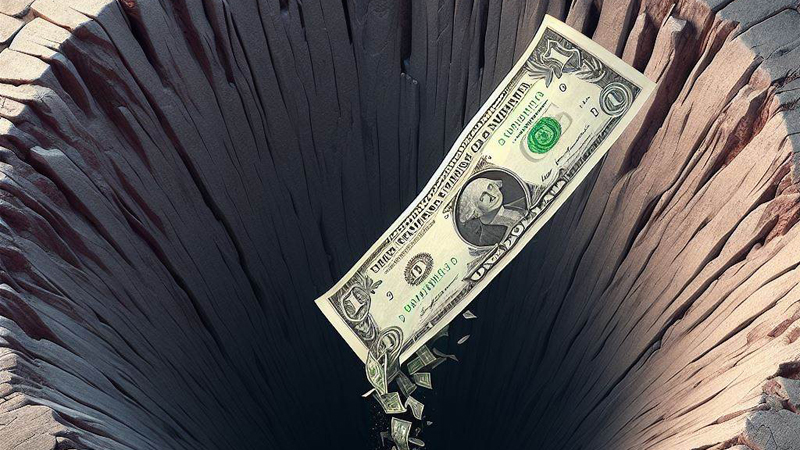Trending
Debt-Saddled Consumers Embracing Even More “Doom Spending”

In a disturbing (but unsurprising) trend, more than 1 out of 4 US consumers are throwing in the towel with defeatist “Doom Spending” sprees — despite already being saddled with crippling levels of debt.
This behavior is akin to someone who, feeling overwhelmed, indulges excessively in a habit they know isn’t beneficial. In a similar vein, these Americans, perhaps feeling a sense of despair, are accumulating unprecedented levels of new debt through spending sprees that are beyond their financial means.
In fact, the average household owed a staggering, unsustainable $103,358 last year, with Q2 consumer debt totaling $16.84 trillion nationally according to Experian.
The result is a deeper and more terminal state of consumer financial decline than ever, but don’t tell that to National Retail Federation CEO Matthew Shay. He was unsurprisingly delighted to find a record number of shoppers turned out for Black Friday deals in 2023 despite ballooning consumer debt and broader economic and political uncertainty.
“Shoppers exceeded our expectations with a robust turnout. Retailers large and small were prepared to deliver safe, convenient, and affordable shopping experiences with the products and services consumers needed, and at great prices.”
Never mind that many of these shoppers took out loans to pay for it all. With last year’s reports of a return to pre-pandemic holiday spending, an optimistic outlook appeared superficially tempting. However, inflation isn’t likely to be calmed in 2024. That means that the usual New Year’s resolutions to spend less and save more aren’t going to be enough to stop the credit-fueled doom spending trend.
One major reason is that so-called “resilient” consumers still haven’t paid off their debt from last year’s holidays, have blown through their savings, and are now going deeper in debt than ever. With little hope left, doom spending has become a self-contradictory psychological palliative and, in some cases, a way for despondent consumers to trick themselves into presenting a veneer of normalcy.
While politicians love calling high spending a sign of economic strength, they tend to neglect to mention important facts, such as that consumers are maxing out their credit cards in the process. Ironically, a large subset of consumers respond to financial stress by digging an even deeper hole for themselves, but perhaps they’re just following the example set by the US government and central bank.
Ignoring the specter of trillions in post-Covid money still swirling around in the economy, the Fed claims that it has sufficiently reduced inflationary pressures and can start to lower rates again next year. After declaring inflation “transitory” in 2023, Jerome Powell blamed everything but Federal Reserve monetary policy for rising prices:
“It was a combination of very strong demand, without question, and unusual supply-side restrictions, both on the goods side but also on the labor side, because we had a [labor force] participation shock.”
Now we’re led to believe that rate cuts are on the horizon. And while cheaper borrowing in 2024 may be a good sign for the price of gold, it’s a terrible choice for a central bank claiming to have won its war against inflation after such an unprecedented historic frenzy of Covidian money printing. As Peter Schiff remarked about 2023’s final FOMC meeting,
“The Fed surrendered. Inflation won the fight…it is a pivot in defeat. The Fed stopped hiking rates because it can’t hike them anymore…now that the Fed has said, “Mission Accomplished, the dollar is going to tank.”
Unable to stuff the inflation genie back in the bottle, consumers aren’t likely to get the relief they need to start actually saving again this year. And while a tanking dollar may be good for gold, for doom spenders, diminishing purchasing power coupled with the availability of cheaper debt will only reinforce their habit. The psychology of doom spending indicates that a lower cost of borrowing will only tempt them to feed their addiction with more borrowed money. Meanwhile, the last of their savings are being wiped out, they’re hitting their current cards’ credit limits, and previous debts are increasingly being left unpaid.
Deep State To Remove Joe Biden At DNC In July
Read the full article here


















